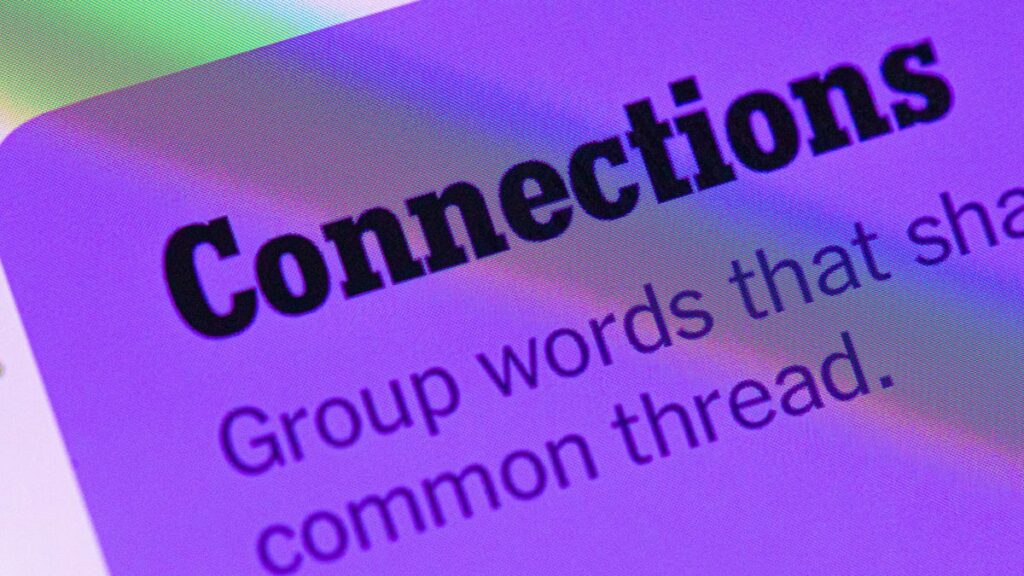
For puzzle enthusiasts seeking the latest challenge, today’s New York Times Connections puzzle offers a mix of intrigue and difficulty. On July 16, 2023, puzzle #766 presents a classic conundrum with the notorious purple category, leaving many players scratching their heads. If you’re looking for hints or the outright answers, you’re in the right place.
The puzzle, part of The New York Times’ expanding suite of games, has become a daily ritual for many. Alongside other popular games like the Mini Crossword and Wordle, Connections has carved out its niche by challenging players to identify thematic groupings. Today’s puzzle is no exception, featuring categories that range from the straightforward to the obscure.
Understanding Today’s Puzzle
Today’s Connections puzzle includes a notorious purple category, often solved only after the other groups are completed. The Times has introduced a Connections Bot, similar to its Wordle counterpart, allowing players to analyze their performance and track progress over time. Registered users can delve into statistics such as win rates and streaks, adding a competitive edge to the daily challenge.
Hints for Today’s Connections Groups
To assist players, here are the hints for today’s groups, ranked from the easiest to the most challenging:
- Yellow group hint: Where students hang out.
- Green group hint: Chewing the scenery.
- Blue group hint: Going to catch you!
- Purple group hint: Think frat and sorority names.
Answers for Today’s Connections Groups
For those eager to confirm their guesses or seeking a solution, here are the answers:
- Yellow group: Parts of a college campus – cafeteria, dorm, library, quad.
- Green group: Exaggerated, as a performance – camp, dramatic, hammy, overdone.
- Blue group: Close in on – corner, surround, trap, tree.
- Purple group: Starts of Greek letters – bet, delt, lamb, the.
The Evolution of NYT Puzzles
The New York Times has long been a pioneer in the world of puzzles, with its crossword being a staple since 1942. The introduction of digital puzzles like Connections and Wordle reflects a broader trend towards interactive and engaging content that appeals to a diverse audience. These games not only entertain but also challenge cognitive skills, offering a mental workout for players of all ages.
According to puzzle expert Dr. Emily Sharp, “Games like Connections tap into our natural pattern recognition abilities and provide a satisfying sense of accomplishment when solved. They are both a test and a testament to human ingenuity.”
Challenging the Mind: Toughest Connections Puzzles
Over time, some Connections puzzles have stood out for their complexity. Here are a few of the toughest challenges that have puzzled even the most seasoned players:
- #5: Included “things you can set,” such as mood, record, table, and volleyball.
- #4: Included “one in a dozen,” such as egg, juror, month, and rose.
- #3: Included “streets on screen,” such as Elm, Fear, Jump, and Sesame.
- #2: Included “power ___” such as nap, plant, Ranger, and trip.
- #1: Included “things that can run,” such as candidate, faucet, mascara, and nose.
These puzzles not only entertain but also encourage players to think outside the box, fostering creativity and critical thinking.
Looking Ahead: The Future of Puzzle Games
The popularity of puzzles like Connections highlights a growing demand for interactive and intellectually stimulating content. As technology continues to evolve, so too will the nature of these games, potentially incorporating elements of artificial intelligence and virtual reality to enhance the user experience.
For now, players can continue to enjoy the daily challenge and camaraderie that comes with solving puzzles, sharing strategies, and celebrating victories, one square at a time.
As the New York Times continues to innovate, the future of puzzle gaming looks bright, promising endless possibilities for both casual players and dedicated enthusiasts alike.






